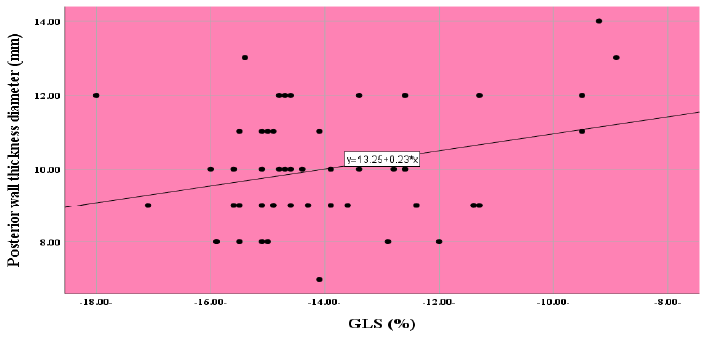Correlation between the Posterior Left Ventricular Wall Thickness and Relative Wall Thickness with Global Longitudinal Strain (GLS) In Hypertension
Main Article Content
Abstract
Background:Hypertension also known as raised blood pressure, is a state when blood vessels have permanently high. Primary hypertension is the most common one range about 90-95% of cases and may exist due to environmental and genetic factors, whilst secondary hypertension forms about 2-10% of cases and has many etiological factors such as vascular, endocrine or renal causes. Hypertensive heart disease is one of complications of hypertension which means a group of changes in theleft atrium (LA), left ventricle (LV), and coronary arteries as due to high blood pressure.
Aim of study: This study is targeted to evaluate the correlation between posterior wall thickness (PWT) ofLV and relative wall thickness (RWT) with global longitudinal strain (GLS%) in hypertension by conventional and advanced echocardiographic modalities.
Method:A cross sectional study of total number 50 individuals (female: 29 and male: 21) who have primary hypertension on antihypertensive medications. Our study reported from December 2021 to April 2022 in Merjan Teaching City at Babylon province, Iraq. Two-D conventional echocardiography, Tissue Doppler Imaging and Global longitudinal strain (GLS %) by speckle-tracking echocardiography had been performed. Statistical data analysis of correlation was done and the significance value was <0.05).
Results: There is a significant correlation between the GLS% and diameter (mm) among hypertensive patients. (N=50, r = 0.292, P= 0.04) as well as between the GLS % and RWT among hypertensive patients. (N=50, r = 0.293, P value = 0.039).
Conclusion:the study concluded a significant correlation between GLS% with increasing in both PWT and RWT in hypertensive patients.

